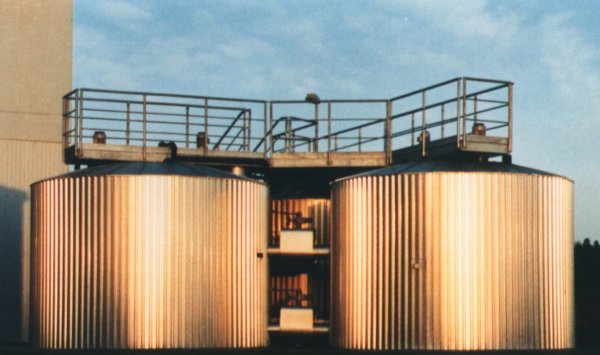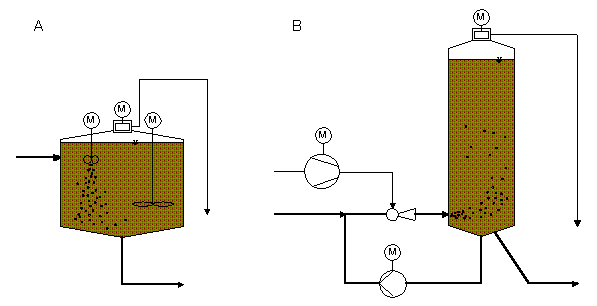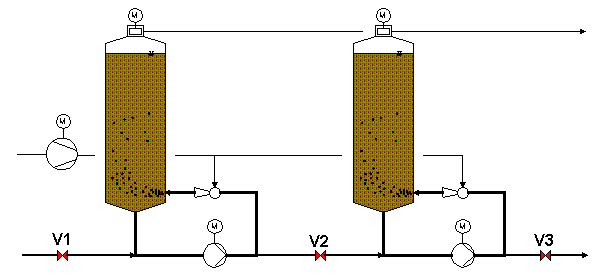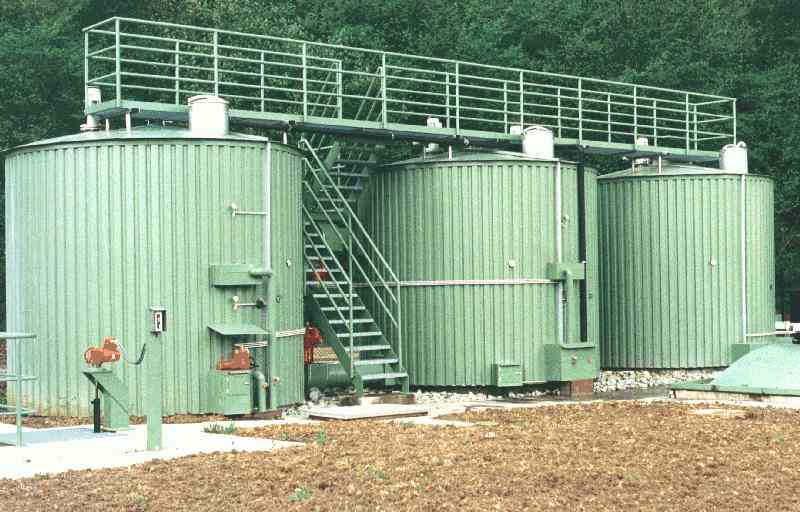
| back to main page |

|
| Die LIMUS Umwelttechnik
GmbH hat Ihre Geschäftstätigkeit aufgegeben. Wir von der PONDUS Verfahrenstechnik GmbH möchten Ihnen aber gern weiterhin mit Rat und Tat zur Seite stehen. |
 |
| Wir freuen uns über Ihren Besuch. Sie werden automatisch zu uns weitergeleitet. |

Anaerobic sludge digestion requires high investments and substantial operating and maintenance costs. Such process is economic only for large purification plants, in particular, if further expenditures for sludge pasteurising are required.
In Germany land application of sewage sludge is allowed only in accordance with the official sewage sludge regulation (AbfKlärV). In other countries, e.g. in Switzerland, also pasture-grounds can be used.
The process is suitable also for the pre-treatment of faecal sludges.
With the LIMUS Biotherm-Process the energy content of raw sludge is used with good efficiency for its self-heating, so that temperatures up to 75°C are obtained. Since the biological processes are substantially faster under these thermophilic conditions than within the mesophilic range, the retention time necessary for sufficient stabilisation can be reduced to 6 days. Accordingly the reactor volume decreases to about 25 % with same reduction degree.
As in the case of anaerobic digestion, a complete reduction of the degradable organic substance would be possible only with infinite residence time. Also, anaerobic sludge treated up to the technical limit creates further - although small - quantities of gas. The same applies to aerobic thermophilic stabilised sludge as a function of the environment conditions.
The treated sludge can be usually after-thickened by decantation. For longer storage an easy aeration is recommended in order to keep the sludge fresh.
With very thin or already partly-stabilised sludge that contains few biologically degradable material simultaneous stabilisation and hygienisation can be achieved by means of additional measures:
by supply of external heat,
by exchanging heat between the hot, treated sludge and the cold, untreated sludge.

LIMUS uses self-sucking BIOPROP stirrers, either alone or in combination with slowly running mixers, see A in Fig. 2.
The new developed LIMUS jet-aerator represents an advancement, because air supply and circulation are decoupled, so that each of these two variables can be optimised individually, see B in Fig. 2. With this version slimmer reactors can be used.
In the waste air outlet at the head of the reactors mechanical foam breakers are arranged. A subsequent treatment of the exhaust air can be executed by means of bio-filters or bio-scrubbers. Another possibility is injecting the untreated exhaust air into an aeration basin.
 Fig.
3: Hygienisation conditions
Fig.
3: Hygienisation conditions
The connection of impact time and temperature on killing of pathogens is a straight line in single logarithmic representation. The line drawn in fig. 3 is based on literature data and own investigations and fulfils the specifications of ATV and German Federal Health Office.
A LIMUS Biotherm system is fed with sludge in regular intervals in such a way, that mixing of treated and untreated sludge is impossible.

Fig. 4: Two-stage system
The two-stage system according to fig. 4 is fed usually once daily. First the valve V3 is opened, so that sludge from the second reactor flows off; its volume corresponds to the volume of raw sludge to be treated. Afterwards V3 is closed and V2 opened; the same quantity flows from first into the second reactor. Finally, when V2 is closed and V1 opened, the first reactor is filled up with raw sludge.

Fig. 5: Single-stage system with
heat recovery
In the single-stage system with heat exchanger of fig. 5 the sludge remains on a comparatively higher temperature the entire retention time. From the coat space of the heat exchanger and the reactor treated sludge is discharged three times daily. The reactor is filled again from the interior of the heat exchanger with preheated raw sludge.
The operational sequence is automatically controlled and requires supervision only.
The following approximate values apply to average municipal mixed sludge:
| Retention time in the reactors: | > 6 days |
| Temperature in last stage: | 55-65°C |
| Reduction of organic matter: | 35-45 % |
| Electricity consumption: | 12-20 kWh/m3 |
